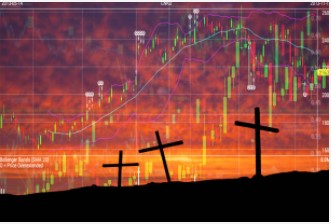Gold Price Forecast: Stocks’ Demise to Impact Gold
The comments below are an edited and abridged synopsis of an article by P. Radomski
There are two primary gold price drivers: the USD Index and real interest rates, but that doesn’t mean that other markets don’t affect the precious metals market at all. The trigger for a certain outcome may come from a different market. Or it could be that a decline is determined by what happens in related markets—in particular, the general stock market.
Currently, the relationship between the general stock market and the precious metals market covers both above-mentioned aspects. Keep in mind that almost one year ago gold plunged along with the stock market, and that silver and mining stocks were affected the most, probably because the general stock market declined.
So, looking at developments in the S&P 500 and other stock market indices is useful even if you’re interested in gold, silver and/or mining stocks only.
Radomski focuses on some of the most important non-technical signs for the stock market; long story short, stock bulls, beware.
In summary, US equities continue on a tightrope, but it is getting riskier by the day. When you combine excessive speculation that exceeds the dot-com bubble with economic fundamentals that mirror the 2008 financial crisis, valuations are completely divorced from reality. As a result, a reversion to the mean could drag precious metals down. However, after the dust settles (perhaps several weeks or months), precious metals will likely continue their long-term uptrend.
Gold had a good post-Covid run-up in 2020, but it failed to hold the breakout above its 2011 high despite ultra-dovish monetary and fiscal policies. That tells us that forecasting gold’s rally without a bigger decline first is likely to be misleading. Silver is likely to slide as well. The times when gold is continuously trading well above the 2011 highs will come, but they are unlikely to happen without being preceded by a sharp drop.

